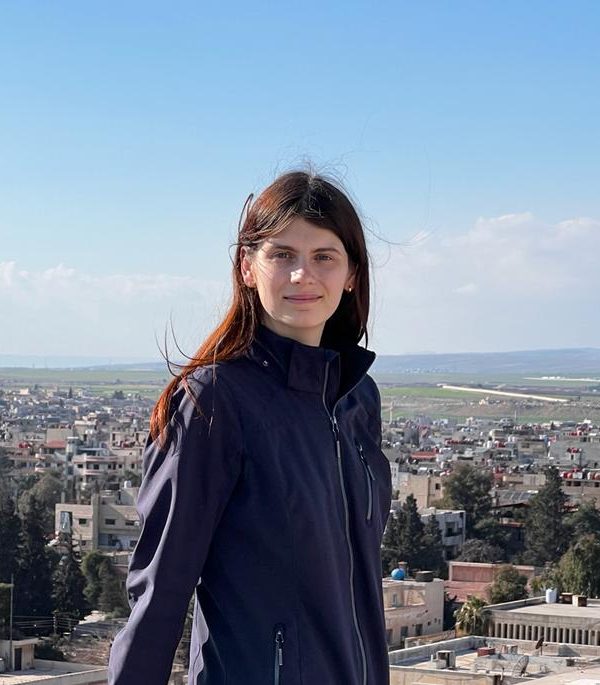
Northern Syria Crisis Update: December 6, 2024
Ongoing developments in Syria are shaking up regional balances. The Kurdish position and the overall situation in the areas of the northeast held by the Syrian Democratic Forces (SDF) and Democratic Autonomous Administration of North and East Syria (DAANES) are key dynamics to watch.
Today: SDF forces capture territory from the regime in Deir Ezzor and Raqqa; the U.S. and Russia push back on Turkish threats against Manbij; Kurdish authorities scramble to support tens of thousands of IDPs forced out of north Aleppo by Turkey-backed militias; and the SDF are talking to HTS to protect Kurds in Aleppo city.
As the only U.S. think tank with a presence on the ground in northern Syria, the Kurdish Peace Institute team is available to provide exclusive insight on the developing crisis and connect journalists and researchers to local sources. If you are interested in a briefing from our team, please reach out to us at info@kurdishpeace.org. Media requests can be directed to media@kurdishpeace.org.
SDF Forces Advance in Deir Ezzor and Raqqa
Arab-majority components of the SDF are pushing south into areas of Deir Ezzor and Raqqa previously held by the Syrian regime as Damascus’ forces collapse across the country. As of late afternoon local time on December 6th, the Deir Ezzor Military Council, a local Arab SDF contingent, had announced its deployment in Deir Ezzor city and other areas “west of the Euphrates.”
Officially, the SDF claims that these advances are necessary to prevent ISIS from taking advantage of regime withdrawals in the Syrian desert. Unofficially, advances in these areas will likely weaken Iran and give the SDF territory that it can use to bargain with other actors later.
All Eyes on Manbij
Turkey-backed Syrian National Army (SNA) militias continue to launch infiltration attempts around Manbij. SDF Commander-in-Chief Mazlum Abdi said in a press conference today that this strategic region is still under threat, and that both the U.S. and Russia are engaging with the SDF and Turkey on de-escalation.
Manbij is a diverse Arab-majority city with a population of about 300,000. It is the only major territory west of the Euphrates that remains under SDF control after the Turkish capture of Afrin in 2018 and Shahba/Tal Rifaat last week. The SDF presence there is seen as particularly vital for the defense of neighboring Kobane, which is already nearly surrounded by Turkish and Turkey-backed forces.
Manbij was liberated from ISIS in 2016. That operation was a signature success for the SDF, then a newly-formed alliance of Kurdish, Arab, and Christian armed groups, and for its partnership with the U.S-led Global Coalition. It was delayed for some time due to Turkish pressure.
When the SDF-affiliated Manbij Military Council announced the city’s liberation, Turkey immediately launched an invasion of neighboring Jarablus. Turkish authorities claimed that Operation Euphrates Shield was intended to clear the region from ISIS. In reality, Turkey used this move to prevent the SDF from taking control of the entire Syrian-Turkish border. Manbij has been the subject of Turkish threats and failed U.S.-Turkish negotiations ever since.
If Turkey and Turkey-backed groups advance into Manbij now, it will be a debilitating blow to Turkey-SDF de-escalation efforts and wider attempts at Turkish-Kurdish reconciliation and will further deepen the humanitarian crisis in northern Syria. If U.S. mediation can preserve stability and security there, the outlook for these negotiations is more positive.
Humanitarian Needs Increase After Turkey-Backed Militias Capture Shahba
According to DAANES sources, at least 85,000 IDPs have reached northeast Syria from Shahba and Tal Rifaat following the Turkey-backed SNA’s takeover of those regions. Tens of thousands more are expected to arrive. Most of these IDPs were displaced to Shahba and Tal Rifaat from Afrin in 2018.
Local media and human rights monitors warn that SNA militias are harassing evacuation convoys and have killed, injured and abducted IDPs while attempting to flee.
The DAANES is receiving IDPs at designated sites in Tabqa and Raqqa. Their resources are stretched thin following systematic Turkish attacks on critical water and energy infrastructure and years of economic crisis. Local communities are banding together to support IDPs with the few resources they have, and DAANES authorities are calling on NGOs and the international community to assist.
The SDF claims that the Coalition has assisted with evacuations from Shahba and Tal Rifaat. Alongside de-escalation efforts, this is a second positive indicator for the U.S. approach to the region’s crisis.
The SDF and HTS are Talking
In today’s press conference, Gen. Mazlum Abdi confirmed that the SDF is communicating with Hayat Tahrir al-Sham (HTS), the hardline Islamist group that has taken over Aleppo, Hama and Homs from the Syrian government.
Gen. Abdi stated that the discussions centered around protecting the population of the Kurdish enclaves in Aleppo city. If regime forces continue to crumble and new talks over the future of Syria begin, however, they may expand. HTS and the SDF have, so far, avoided direct confrontation. While the SDF are no fans of the Islamist group’s politics, they view it as less anti-Kurdish and more independent from Turkey than the SNA is. What these two vastly different groups are able, or unable, to agree on could shape the future of the country. The SDF could even serve as a much-needed moderating influence on HTS’ behavior.
Some commentators have expressed shock at the SDF’s position. In reality, its Kurdish leadership have always been willing to speak to all sides of Syria’s war — including Turkey, their primary adversary. The political philosophy of the Kurdish movement stresses the concept of the rêya sêyemîn, or ‘third path’ — that is, if two anti-Kurdish forces are fighting, you can use one against the other for tactical gain, but don’t side permanently with either. That position has earned them criticism from many parties but, ultimately, has helped northeast Syria preserve its autonomy until today.



